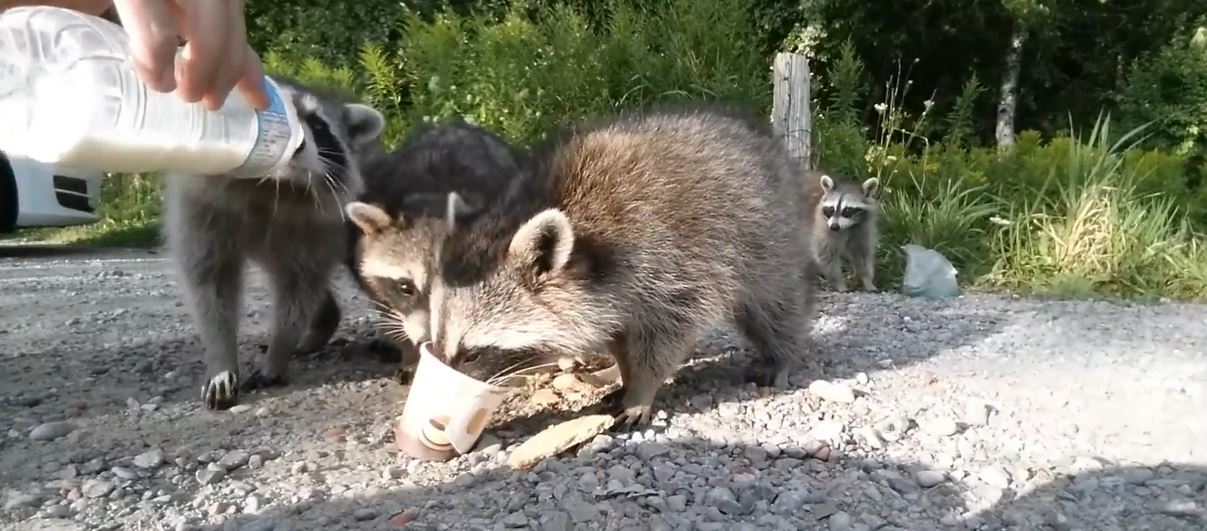Should You Feed Wildlife?

When they see a wild animal, many people have the natural instinct to try to get close to it, touch it, or even feed it. While trying to touch a wild animal is dangerous due to the risk of bites, scratches, or disease, feeding them isn't necessarily better. The fact is that you should almost never feed wildlife. The exception to the rule would be doing so naturally, such as by planting an extra tree on your property that provides food for the animals. Other than similar natural options that don't involve interacting directly with the animal, there are multiple reasons that you should never feed wildlife.
Not The Right Food
The vast majority of people don't have specific wildlife food on hand at all times and this means that they would simply give wildlife whatever food they have on hand. The issue is that these food items, such as bread, will be tempting to the animal in question but provide no nutritional value. In fact, feeding ducks and other waterfowl bread can lead to the “angel wing” deformity. If you are go against advice and feed wildlife, make sure that you at least offer them foods from their own diet, such as duck pellets found at animal feed stores.
Eliminates Their Fear
A big issue with feeding wildlife is that it decreases or completely eliminates their fear of humans. Animals are naturally afraid of people and this is for the best. It reduces our risk of animal-transmitted diseases, bites, and scratches, and reduces their risk of being harmed by humans. When animals are no longer afraid of humans, they may begin to beg for food, becoming a nuisance or even a danger, especially in the case of more aggressive animals.
Dangerous To All Involved
Simply put, when animals aren't afraid of people, it creates a dangerous situation for everyone. The animals may get too close to cars or other moving vehicles, leading to them getting hit and dying. They may also begin to look for food in vehicles, homes, or other areas, causing damage in the process. It is common for wild animals in certain parks, such as Yosemite, to cause damage by attempting to break into vehicles in search of food.
Attracts Animals To Your Area
Another issue with feeding wildlife is that it attracts more animals to your location. You may think you are helping the animal by reducing their need to look for food or making sure they get enough when food is scarce. The issue, however, is that if you feed the animals, more will come, increasing the competition for the food source.
Additionally, the animals will stay in your area even when you stop feeding them. If the number of animals becomes too great or you stop providing them with the food, they won't necessarily leave.
Instead, they will turn to the plants or garbage on your property as an alternative food source or even try to break into your home in search of it, causing damage. This is why even feeding animals during cold winter months when food is scarce is a poor idea.
Makes Them Helpless
Feeding wild animals also tends to increase their helplessness. In order to survive, these animals need to know how to scavenge or hunt. Depending on how long or how often you feed them, they may become used to being given food and slowly lose their hunting skills. If baby animals grow up without having to hunt, they will not know how to fend for themselves when you no longer give them food. They simply won't have the necessary skills and are likely to starve to death.
Disease Or Injuries
In addition to the ways already mentioned that feeding wildlife can lead to disease or injuries, there are other factors as well. Feeding animals tends to attract big groups and the larger a group of animals is, the more likely they are to transmit disease. This means that an animal-based disease may travel through the wildlife population more quickly or spread further due to the feeding. It also increases the competition as numbers grow, leading to an increased risk of fighting between animals. Similarly, the larger numbers of animals by the food source you provide increases your risk of animal-carried diseases or injuries.
What To Do
Instead of feeding the wildlife, you should take steps to ensure that you don't accidentally feed them. If you visit a park, be sure to take all of your garbage with you and not feed the animals there. While at home, keep your pet food inside and ensure your garbage is tightly sealed. It is generally okay to feed squirrels or birds in your backyard, but remember to do so with a feeder to minimize contact. For those who truly want to provide for the animals, your best option is to set up a birdbath or plant some flowers, trees, or bushes that the animals will enjoy.
Read the Pest Wildlife Home Page page for helpful information and to learn more about Should You Feed Wildlife?

